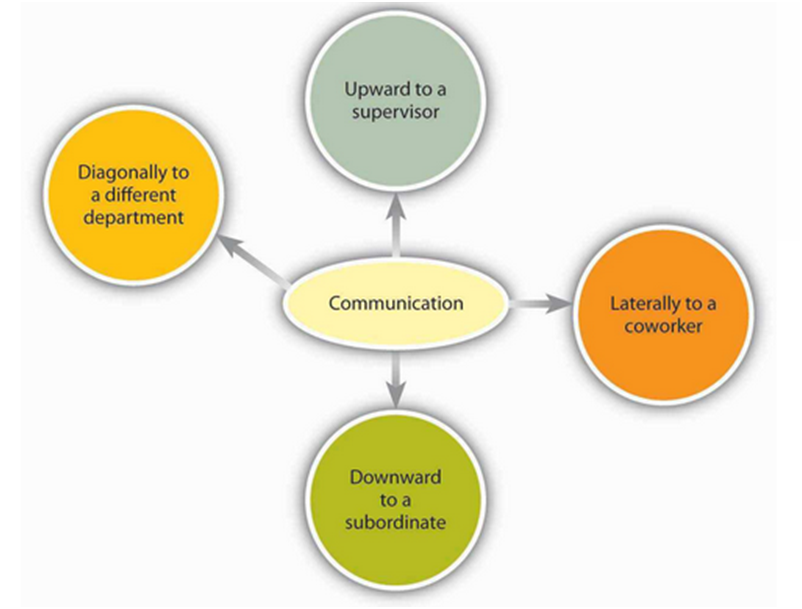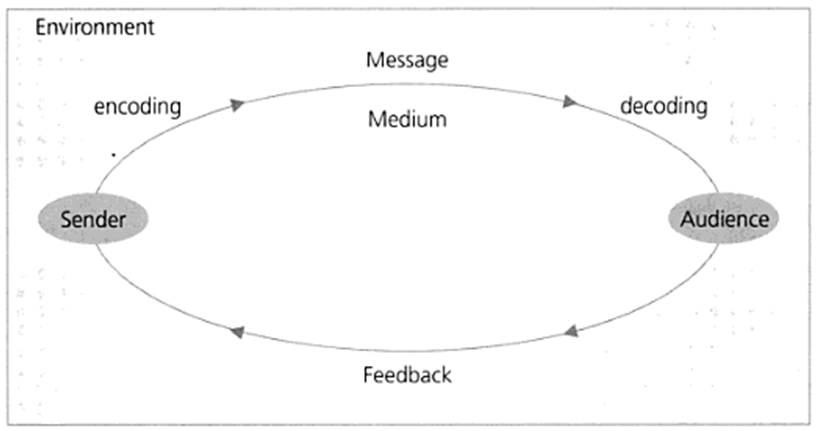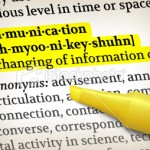Posts by John Dudovskiy

According to Horrigan (2010) there is no widespread definition of CSR due to the high levels of ambiguity and controversy associated with the topic. It has to be noted that “virtually all definitions of CSR include the notion that business firms (i.e., corporations) have obligations toward society beyond their economic obligations to shareholders” (Schwartz, 2011, p.19) Nevertheless, CSR definition that captures the main aspects of the term can be proposed as “corporate initiative to assess and take responsibility for the company’s effects on the environment and impact on social welfare” (Investopedia, 2013, online). Additionally, the following definitions of CSR have been proposed by different authors: “how companies manage the business processes to produce an overall positive impact on society” (Baker, 2004) “continuing commitment by business to behave ethically and contribute to economic development while improving the quality of life of the workforce and their families, as well as of the local community and society at large” (World Business Council for Sustainable Development in Hopkins, 2007) additional responsibilities of businesses to local and wider communities apart from its core responsibility of profit maximisation (Simpson and Taylor, 2013) References Baker, M. (2004) “Corporate Social Responsibility – What does it mean?” Available at: http://www.mallenbaker.net/csr/definition.php Corporate Social Responsibility (2013) Investopedia, Available at: http://www.investopedia.com/terms/c/corp-social-responsibility.asp#axzz2A54oj5IY Horrigan., B. (2010) Corporate Social Responsibility in the 21st Century: Debates, Models and Practices Across Government, Law and Business, Edward Elgar Publishing, Cheltenham, UK Schwartz, M.S. (2011) “Corporate Social Responsibility: An Ethical Approach” Broadview Press, USA Simpson, J. & Taylor, J.R. (2013) “Corporate Governance Ethics and CSR” Kogan Page
October 29, 2013
By John Dudovskiy
Category: Corporate Social Responsibility
Tags: Definitions, Ethics

There is a set of factors that could have negative implications in facilitation of organisational communication. These barriers include choice of the wrong communication medium, incorrect use of language, wrong type of message, inappropriate appearance of message, use of jargon, emotional barriers, and physical disabilities. 1. Choice of Wrong Communication Medium The choice of wrong communication medium is one of the most common communication barriers. The choice of communication medium need to correspond to the nature of the message. For example, giving negative feedback regarding any aspect of employee performance is better done through a verbal communication in a constructive way, rather than sending a letter or an e-mail. 2. Incorrect Use of Language Incorrect use of language can also be specified as one of the major barriers to effective communication and this may relate to grammar, punctuation, spelling and a range of other issues. 3. Wrong Type of Message Another significant barrier to communication may relate to inappropriate choice of the type of message. Complex instructions to employees need to be communication in written forms, whereas interpersonal and other conflicts are best resolved with oral communication. 4. Inappropriate Appearance of Message Ineffective appearance of the message can also prove to be a communication barrier in organisational settings. Inappropriate appearance of the message is usually caused by its poor expression associated with readability, light print, omissions, ineffective sentence structure and others. Ineffective organisation of ideas and poor choice of words in verbal communication can be specified as additional reasons of inappropriate message appearance. 5. Use of Jargon A range of occasions and reasons when jargons are used may relate to communicating with individuals within the same industry, unthinking use of jargons, attempts to impress the receiver(s) of message, altering the attention of receiver from…

Increasing importance of communication in organisations has been discussed by a number of authors, the most notably in the works of Mangion (2011), Guffey and Loewy (2012), Zeng (2012) and DeVito (2012). Mangion (2011) detects a direct link between the quality of management-employee communication and the level of achievement of organisational aims and objectives. Moreover, Mangion (2011) convincingly argues that increasing importance of communication in organisations is linked to shortening period of time associated with decision making. The level of communication in organisations between management and employees also has implications on the level of trust of employees towards management (Guffey and Loewy, 2012, Zeng, 2012). According to the findings of Guffey and Loewy (2012), in organisations where management regularly communicates with workforce employees tend to have greater level of trust and confidence, and consequently loyalty to their management. Similarly, DeVito (2012) finds positive correlation between the qualities of management-employee communication and the level of employee motivation. DeVito (2012) explains this finding in a way that a high quality of management-employee communication creates the feeling of involvement in organisational decision making in employees, and thus they become more empowered to perform their duties. Moreover, DeVito (2012) argues that communication in organisations might have several directions and illustrates these directions as it is represented below Directions of Organisational Communication Source: DeVito (2012) The most popular communication methods in organisations include e-mails, face-to-face meetings, group shifts meetings, scheduled and unscheduled meetings and others (Yates, 2007, Innis and Watson, 2008, Zeng, 2012). Hargie (2012) links the increasing importance of communication in healthcare organisations in particular to regular technological innovations and technological breakthroughs within the same sector. Moreover, important attributes of private healthcare organisations have been specified by Guffey and Loewy (2012) and Zeng (2012) as increased level of power of external stakeholders, high level…

Channels of communication can be divided into four categories: nuturative, requisitive, directive, and emotive. Moreover, employees can also be divided into reactor, workaholic, persister, dreamer, rebel, and promoter categories. Pauley and Pauley (2009) correspond the utilisation of each of these channels to the types of employees in the following manner: Type Channel Reactor Nuturative Workaholic Requestive Persister Requestive Dreamer Directive Rebel Emotive Promoter Directive Source: Pauley and Pauley (2009) References Pauley, J.A. & Pauley D.J. (2009) “Communication: The Key to Effective Leadership” ASQ Quality Press

Verbal Communication Verbal communication is facilitated with the use of voice and words. Generally, the key elements of verbal communication include words, sound, languages, and the physical act of speaking. The majority of verbal communication account for casual exchanges with other people. In verbal communication there is a clear and personal communication link between senders and receivers. Challenges associated with verbal communication include poor choice of wording, physical disabilities, ineffective utilisation of communication techniques, and subjective opinions. The outcomes of verbal communication between managers and subordinates can be compromised in terms of achieving its objectives through the negative impact of certain factors. These factors include poor listening skills of managers, emotional barriers, use of inappropriate language. Non-verbal Communication The majority of communication is facilitated in non-verbal ways. Non-verbal communication can be divided into the following eight categories: facial expression, appearance, haptics, gestures, eye gaze, paralinguistics, proxemics, and body language and posture. One of the main differences of non-verbal communication from verbal communication can be specified in a way that in former form the communication can be done intentionally, as well as, unintentionally. In other words, when an individual is experiencing specific feelings such as boredom, excitement, or fear, his or her feelings can be communicated through non-verbal channels even when the individual does not aim to communicate them intentionally.

The model of interpersonal communication assists in comprehending elements and interactions relevant to the communication process. Communication models can be linear or cyclical. The Model of Interpersonal Communication illustrated below acknowledges communication as a continuous process and appreciates the impact of each element on the overall outcome of communication. Source: Cleary (2008) Sender In the process of communication the sender is an individual that initiates the communication in the first place. Also, specified as source, encoder or communicator, the sender has the primary responsibility of the contents of the message. Medium Medium in a communication process can be explained as a form in which the message is transmitted by a sender to a receiver. Medium can be divided into two categories: written and spoken. Written medium include book, letter, e-mail, fax, memo and any other written format, whereas spoken mediums include but not limited to lectures, presentations, interviews, telephone conversations and others. The choice of medium in communication depends on a wide range of factors that include the duration of time available, the level of importance of the message, geographical distance between sender and receiver, and cost considerations. Audience Receiver, also referred to as an audience is the individual to whom the message is directed by the sender. Communication outcome depends on the ability of the receiver to understand the message. The manner in which receiver comprehends the message depends on individual life experiences and cultural background. Decoding Decoding comprises the process of receiving, interpreting and comprehending the message by receiver. A range of factors impacting this stage of the communication process include the type of message, the quality of the use of language by the sender, possible emotional barriers and others. Feedback Feedback can be explained as the response of the receiver to the…

A literature review can be explained as “account of what has been published on a topic by accredited scholars and researchers” (Herbst and Coldwell, 2004, p.31). Literature review conducted as a part of an academic research must meet the following basic requirements: 1. Literature review must be directly related to project questions and objectives. 2. Literature review must contain of synthesis of results into summary about what is known and not known about the project area. 3. Literature review must identify and discuss the areas of controversy in the literature. 4. Literature review must be instrumental in identifying areas for further research. References Herbst, F. & Coldwell, D. (2004) Business Research, Juta and Co Ltd
By John Dudovskiy
Category: Literature Review

The origin of the term of ‘communication’ is linked to the Latin word of ‘communis’ that means common. There are many definitions of communication. One of the most comprehensive definitions of communication can be proposed as “the process of creating meaning between two or more people through the expression and interpretation of messages” (Cleary, 2008, p.xii). In simple terms, communication can be defined as a process in which a message is encoded by a sender and passed to receiver through certain channels, or order for the message to be decoded. Adppted from: Anthony Wanis-St.John’s “Communication and Negotiation” References Cleary, S. (2008) “Communication: A Hands-on Approach” Juta

Employee morale is “a composite of feelings and attitudes that individuals and groups have toward their work, working condition, supervisors, top level management, and the organisations” (Leonard, 2012, p.375), whereas motivation can be defined as “the process that determines the reinforcement value of an outcome” (Kalat, 2010, p.375). Strategies offered to Managing Director in terms of repairing employee morale and boosting motivation include determining the types of employee motivation, applying to the most immediate needs of employees, adopting an individualistic approach in employee motivation, using an effective combination of tangible and intangible motivational tools, and achieving equity in motivation. The rationale behind each of these strategies is discussed below in greater details. 1. Determining the Types of Employee Needs It is important to determine types of employee need in order to repair employee morale and boost the level of motivation at Company. McClelland’s Achievement Motivation (1965) can be used to deal with this task. McClelland (1965) divides employee needs into three groups: need for achievement, need for power, and need for affiliation. It has to be noted that all three types of needs – need for achievement, need for power, and need for affiliation can be possessed by any one individual; nevertheless, specific type of need generally prevails over others for each individual. Accordingly, managers need to engage in employee motivation taking into account their specific needs. For example, employees that have need for power can be effectively motivated by positions with greater level of responsibility. Motivation of employees with a greater need for affiliation, on the other hand, can be achieved through publicly acknowledging their contribution to the achievement of organisational goals in front of groups in general, and their immediate team members in particular. 2. Applying to the Most Immediate Needs of Employees Maslow’s Hierarchy of…

Systematic literature review can be defined as “a review with a clear stated purpose, a question, a defined search approach, stating inclusion and exclusion criteria, producing a qualitative appraisal of articles” (Jesson et al., 2011, p.12). References Jesson, J., Matheson, L. & Lacey, F.M. (2011) “Doing Your Literature Review: Traditional and Systematic Techniques” SAGE Publications
By John Dudovskiy
Category: Literature Review
